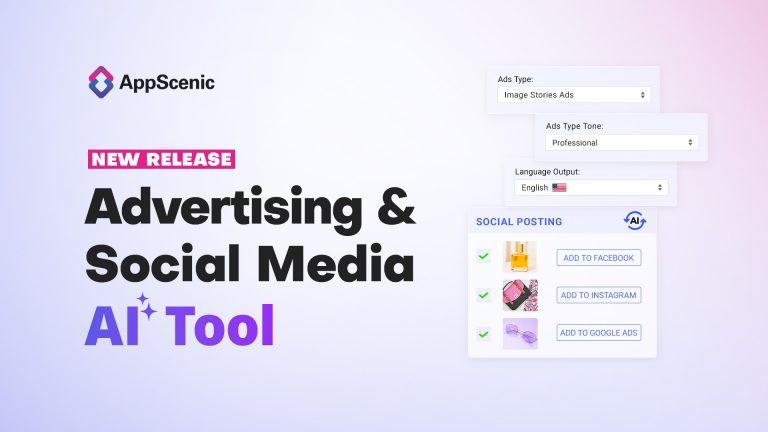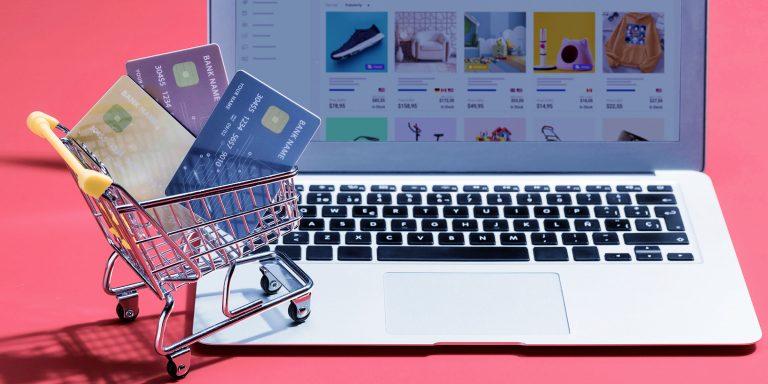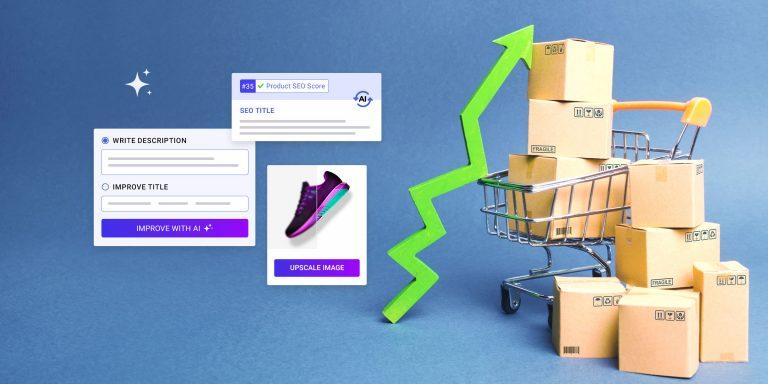Yes, you read that right. Over 90% of dropshipping businesses fail during the first few months. This happens due to the challenges and misconceptions surrounding this popular ecommerce model. Now, one reason behind this shocking statistic is that many aspiring entrepreneurs believe that dropshipping will make them millionaires overnight. While dropshipping is a great way to enter ecommerce, it’s not a get-rich-quick scheme.
Another reason most dropshippers fail is due to their lack of experience in ecommerce and the fact that most believe dropshipping is still about buying cheap products from China and selling them in the USA at a very expensive price. Successful dropshipping isn’t about that anymore.
If you want to learn from other people’s mistakes and avoid doing the same ones, here are 6 of the important reasons why most dropshippers fail.
Table of Contents
6 Common Reasons Why Most Dropshippers Fail
Success requires hard work, strategic planning, and a deep understanding of the market. If you’re thinking of starting a dropshipping business, you should start reading about the dropshipping industry and understanding how this business model works. This includes why other retailers failed and what you can do to avoid making the same mistakes.
The following are some of the most important reasons dropshippers fail and why most people say dropshipping is dead or a scam. Besides explaining why they fail, below we will try to give you some actionable tips to increase your chances of success.
1. Not enough research and preparation
One of the biggest mistakes dropshippers make is jumping into the business without sufficient research. Dropshipping isn’t just about listing products online and waiting for sales; it’s a business model that requires strategic planning.
Now, most people don’t take this step too seriously, which means they set themself up for failure right from the start. If you don’t know how dropshipping works and what the process looks like, or what are the right steps when starting such a business, then you don’t actually understand if this business is for you.
As you will see once you do your research, dropshipping takes time and patience, and if you don’t have these qualities, then you do need to think about starting another type of business.
Here are some key areas of research:
- Understanding how dropshipping works: Learn about the logistics, profit margins, and potential challenges.
- Identifying trending products: Use tools like Google Trends, Keyword Planner, and ecommerce blogs to find profitable niches.
- Knowing your target audience: Understand your customers’ demographics, preferences, and pain points.
- Choosing the right platform: Decide between ecommerce platforms like Shopify or WooCommerce, and whether to use a dropshipping marketplace, like AppScenic, or work directly with suppliers.
For more thorough research, we recommend these sources too:
Expert tip: Research doesn’t stop after launching your store. Continuously analyze market trends, competitor strategies, and customer feedback to refine your approach.
2. Choosing the wrong dropshipping niche
Now, this is one of those mistakes that can make or break your online dropshipping store. One of the first mistakes a dropshipper can make is choosing the wrong niche for your region.
This is actually the most common mistake a beginner can make when starting. Why? Because they don’t take the time to study the market, what is trending in their region, what they can bring new to the area, or the demand, among others.
So, how can you be sure to choose the right niche and not make the same mistake? Well, research, research and then some more research. We know this can be boring and take a lot of your time, but it will also give you the best chances to succeed with your ecommerce business.
For example, check what’s trending in your region (use Google Trends, Google Search, Keyword Planner, etc.) and what other online stores lack or have as bestsellers, and once you make your decision based on solid facts, then you need to test it out.
Now, your test may fail and you won’t have any orders, but that’s normal, that’s why this process is called testing. Don’t give up and test another niche or product category. We recommend that you pick more than one niche to test when doing your research.
Expert tip: Avoid generic niches and focus on products that cater to a specific audience or solve a unique problem.
Read more: How important is it to be niche specific in dropshipping
3. Opting for the wrong suppliers or dropshipping platform
This is another huge mistake. It all starts and ends with your suppliers and their products. So, if your suppliers have low-quality products, are unreliable, and have a long shipping time, then you don’t stand a chance in the ecommerce world. According to the latest data, 84 percent of ecommerce retailers say their biggest obstacle is finding a good supplier.
That’s why it is essential to choose a supplier (or a dropshipping platform) that will offer high-quality, premium products, ship fast and provide a tracking number for their product so that your customers can track their order at any time. It would also be very helpful if you could reach out to them from time to time.
Now, one way you can avoid making this mistake is to choose a dropshipping platform like AppScenic. On AppScenic, you work only with top-tier, reliable suppliers that follow high-quality standards and can deliver products super fast. And what’s even more impressive is that you can choose more than one supplier to partner with.
So, if your first supplier runs out of stock, you always have a backup option, which is a great thing to benefit from for your online business. Now, if you decide to build your store on Shopify, then have a look at our dropshipping app here on the Shopify App Store.
Other ways to find reliable suppliers:
- Evaluate product quality: Order samples to ensure products meet your standards.
- Look for fast shipping: Choose suppliers with warehouses close to your target market to reduce delivery times.
Expert tip: Diversify your supplier base to avoid disruptions. Having backup suppliers ensures you can continue fulfilling orders even if one supplier runs out of stock.
Read more: Shopify Dropshipping: How It Works and How to Get Started
4. Implementing the wrong marketing strategy
Even with the best products, you won’t succeed without effective marketing. Many dropshippers underestimate the importance of advertising and fail to reach their target audience.
Now, let’s say you’ve found the right products and the best suppliers. It’s all for nothing if you can’t get them in front of the right people. This is only possible if you’ve done your market research and know how to reach out to your prospects and future customers.
So, before actually building up your store and starting any dropshipping business, you absolutely need to do market research and study your audience. This will tell you how you can sell your products to them, where you can find them, what search engine they use, and what interests they have. What works for them? And what will make them click and land on your online store?
Unfortunately, your products and suppliers can’t do all the work. You need to go the extra mile, like having a user-friendly website with many amazing product images from various angles, videos that showcase that product, great copy on the product page, etc. Only with this kind of effort you can achieve success in dropshipping.
More than that, you need to be where you’re audience is, and that’s Google (through SEO and Google Ads), Facebook, Instagram, YouTube, Pinterest, and TikTok – for all of this, you need to create a Business Account on every platform and also run weekly ads. Of course, in the beginning, if you don’t have enough resources, you should just pick one or two of these channels and invest in them.
We often see many inexperienced dropshippers with a limited budget going live on all advertising channels at the same, but that’s a wrong strategy. You first need time to test and learn how each advertising platform works, and only then invest more and try to optimize and scale up.
Now, if you are new to advertising on Google and Facebook, you can start with these free courses:
- Google Ads courses: Coursera and Google Skill Shop
- Facebook Ads courses: Coursera and Facebook
Marketing strategies that work:
- Leverage social media ads: Platforms like Facebook, Instagram, and TikTok are excellent for targeting specific demographics.
- Invest in SEO: Optimize your website to rank higher on Google and attract organic traffic.
- Use influencer partnerships: Collaborate with influencers to promote your products to a broader audience.
- Focus on content marketing: Create engaging blog posts, videos, and social media content to drive traffic and build trust.
Dropshipping doesn’t require any advanced marketing skills to get started, but you need to have a foundation and understand how advertising algorithms work in general, the slang, and user behavior on each platform.
Suppose you have no prior experience with dropshipping and ecommerce. In that case, we recommend taking a look at our new dropshipping course, where we teach you how to launch a dropshipping business in less than 30 days and also apply the most efficient marketing strategies for a beginner with a low start budget.
We also recommend using AI tools to optimize your store for Google in less time. And, as we want to help you have a store that performs great on Google, we have just launched Ecommerce AI on AppScenic. These brand-new tools can help you get more sales, optimize your product descriptions and images, and boost your SEO, among others.
Expert tip: Start with one or two advertising channels to test their effectiveness before scaling up. Use analytics to measure performance and adjust your strategies accordingly.
Read more: Top content marketing tactics every dropshipper should know
5. Lack of budget and resources
Dropshipping may have lower startup costs than traditional retail, but it still requires a budget for essentials like website development, marketing, and product testing. Many dropshippers fail because they underestimate these costs.
So, what’s a realistic budget to start such a business? Well, if you want to set up a great online store with everything included—all the features and tools included—and also choose a dropshipping platform and keep some budget for advertising, you would need around $1000-3000 to start with. Once you’re all set, the monthly cost is much lower, around $1000 per month, if you meet the same advertising budget.
Here’s a budget breakdown:
- Initial setup: $500–$2,000 for website design, domain registration, and apps.
- Marketing: $300–$1,000 per month for ads and promotions.
- Product testing: $200–$500 to test multiple products and niches.
Of course, this cost may be much lower, as it depends on many factors, including the type of store, niche, niche size, products, audience, and competition. But this budget will help you be prepared for many scenarios, and it’s enough to test at least 15 products, improving your chances of success.
Now, if you want to know more about what’s behind this budget, here’s a great article on the true cost of dropshipping – where we break down some of the costs you absolutely need to be prepared for when starting a dropshipping business.
If you want to know the truth about how to dropship with no money, we recommend watching this special video we made on this topic (we also added it below). It proved very useful for many dropshipping beginners, as dropshipping isn’t a get-rich-quick scheme, as many would think.
Expert tip: Start small, but have a realistic budget in place. Reinvest your profits into growing your business over time.
6. Long shipping times
As said when talking about suppliers in the first part of this article, shipping times make a big difference the moment you set up everything and start dropshipping.
In the USA especially, with the launch of Amazon’s prime delivery system, people don’t want to wait long for their orders to arrive. Why would they, when Amazon ships their items in just a single day?
According to this consumer study, 42% of customers expect a 2-day shipping option every time they order online. This changes everything, right? Of course, dropshippers fail if they ship their products from China, as such items can take 20 days or more to get to the USA.
How to solve shipping issues:
- Partner with local suppliers: Choose suppliers with warehouses near your target market to reduce delivery times.
- Use expedited shipping options: Offer faster shipping for an additional fee.
- Communicate clearly: Set realistic expectations about delivery times during checkout.
So, you see, it’s very important to find a supplier located in your region or as close as possible and can ship fast. This can mean that customers, especially if they are in the USA, will choose you and not your competition even if you both sell the same product.
Expert tip: Highlight fast shipping as a selling point in your marketing campaigns. This can set you apart from competitors who rely on long shipping times from overseas suppliers.
Read more: How to identify a reliable supplier for your dropshipping niche
How to increase your dropshipping success rate
Now that you know the common pitfalls, here are additional tips to boost your success rate:
- Focus on branding: Build a unique brand identity that resonates with your target audience. This includes a professional website, high-quality product images, and compelling product descriptions.
- Prioritize customer service: Offer quick responses, hassle-free returns, and excellent post-purchase support to build trust and loyalty.
- Use Analytics: Monitor key performance indicators (KPIs) like conversion rates, ad performance, and customer feedback to make data-driven decisions.
- Stay adaptable: Ecommerce trends change rapidly. Be prepared to pivot your strategies and product offerings based on market demand.
- Educate yourself: Take advantage of free resources, courses, and communities to stay informed about industry trends and best practices.
So, is dropshippping worth it?
Absolutely! While over 90% of dropshippers fail, this doesn’t mean you have to be part of that statistic. We know it can be overwhelming to read about so many failures, but even though there is such a big percentage of dropshipping businesses that don’t make it, it doesn’t mean yours won’t.
It just means that starting a successful dropshipping business is not easy, and you should not rush into doing anything before doing your homework and researching it.
Dropshipping is not a shortcut to wealth, but with the right approach, it can be a profitable and rewarding business model. Take the time to build a solid foundation, invest in marketing and customer service, and continuously refine your strategies to stay ahead in this competitive industry.
Ready to start dropshipping? Then, here’s a step-by-step guide on how to start a dropshipping business.
Feeling lost trying to navigate the dropshipping world? Check out our complete dropshipping course. It’s perfect for newbies who need help setting up a shop or experienced sellers struggling to make sales.
FAQ: Dropshipping Success Rate
What is dropshipping, and why do so many dropshippers fail?
Dropshipping is a business model where a retailer, like you, acts as a middleman between supplier and customer. Many dropshipping businesses fail due to a lack of control over products, wrong niche selection, and long shipping times, among other reasons.
How can I start a successful dropshipping business?
To run a successful dropshipping business, you need to focus on finding a profitable niche, choosing a reliable supplier, optimizing your website design, and improving your conversion rates.
What are the common challenges faced by dropshippers?
Dropshippers often encounter challenges such as shipping delays, returns and refunds, high competition, and dropshipping products from a saturated market.
What is the success rate of dropshipping businesses?
Well, while there is no definitive statistic, roughly 90 percent of dropshipping businesses face challenges and may not reach sustainable success.
How important is choosing the right niche for dropshipping?
Choosing the right niche in dropshipping is crucial, as a wrong niche selection can lead to low sales and high competition, ultimately impacting the profitability of your business.
What are some key reasons why dropshippers fail in the industry?
Dropshippers fail for various reasons such as lack of product variety, long shipping times, poor customer service, and ineffective marketing strategies.
How can I ensure a high success rate in dropshipping?
To achieve a higher dropshipping success rate, focus on product quality, branding, customer service, and effective marketing tactics.
Is dropshipping high-risk?
Dropshipping can be considered a lower-risk entry into the world of ecommerce compared to traditional retail models because it requires less capital upfront—you don’t need to purchase inventory. However, it does carry some risks, such as a lack of control over stock and shipping times, which can impact customer satisfaction and your brand’s reputation.
What are the downfalls of dropshipping?
Key downfalls of the dropshipping model include:
- Dependence on suppliers: Your success depends heavily on third-party suppliers’ reliability and product quality.
- Competition: High competition can make it challenging to find a profitable niche.
- Profit margin: Maintaining a good profit margin can be difficult due to competition and sometimes higher costs from suppliers.
- Customer service challenges: Since you don’t handle shipping directly, any delays or product issues can negatively affect the user experience.
Is dropshipping declining?
Dropshipping is not declining but is becoming more competitive. As more entrepreneurs enter the dropshipping market, the strategies for success evolve. Staying informed and adaptable, improving your dropshipping business model, and focusing on niche markets can help your dropshipping business stay competitive.
Is dropshipping dead?
No, dropshipping is not dead. It remains a viable business model for those looking to enter ecommerce with minimal investment. The key to success in dropshipping now lies in choosing the right niche, offering excellent customer service, and managing a seamless user experience to differentiate from competitors.
How has the dropshipping industry evolved?
Over time, the dropshipping industry has seen significant evolution:
- Supplier quality and variety: There has been a marked improvement in supplier reliability and the variety of products available.
- Market saturation: The market has become more saturated, making effective marketing and niche selection crucial.
- Technology integration: Advances in ecommerce platforms and integrations have made managing a dropshipping store more efficient, from automated order processing to enhanced customer relationship management.
- Focus on quality and branding: Successful dropshippers are increasingly focusing on building strong brands and improving customer service to stand out.














